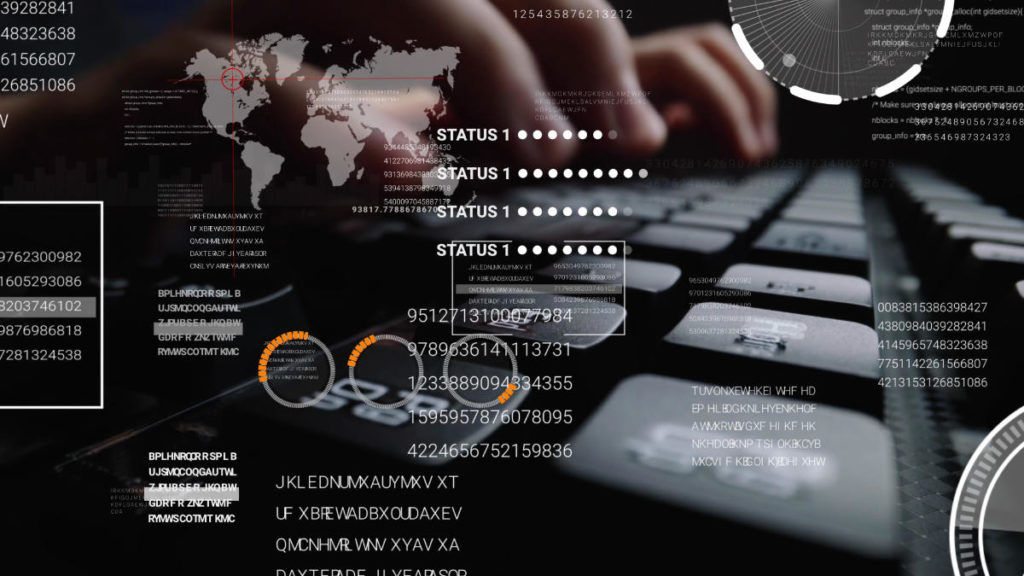Autonomous Threat Sweeper: the news of SOCaaS
Estimated reading time: 6 minutes
Today we see one of the latest additions to our SOCaaS, the Autonomous Threat Sweeper (ATS) . A system able to support SOC in an innovative way and protect against the most innovative threats.
The Privacy Guarantor, through the provision dated May 27, 2021, has introduced some changes regarding the violation of sensitive and personal data. A particular reference was made to the numerous cases of data breach. In essence, the legislation relating to the notification system has been tightened . The legislation provides for the application of a certain procedure to be adopted in the event of a data breach.
It is not easy to stay up to date on the continuous regulations on privacy, nor to have IT threat prevention systems available such as i ransomware working in the shadows and increasingly aggressive and dangerous. For this reason, threat protection has become an issue that is no longer easily manageable through non-professional systems . Today specific IT skills are constantly updated and professionals working in the sector, especially for companies.

Context: the unstoppable growth of ransomware
As we know, the term ransomware defines a category of malware capable of encrypting the files and documents contained in the attacked computer, in some cases even on the network to which it is connected. We have seen this in various articles through known examples .
In recent years, ransomware has spread enormously, so much so that it is listed as the most dangerous cyber threat to businesses .
Among the main companies targeted are those that have a large amount of sensitive data which, if stolen, would expose the company to the distrust of their customers. The encryption of the files stored inside the devices is, therefore, resolved only following the payment of a ransom.
Unfortunately, once compromised, the system does not allow users to access the data on their devices, effectively preventing their use.
Currently, ransomware is one of the main cyber threats, so much so that it is categorized as a profitable business model. This is because of the constant improvements made to their software that make it easier for hackers to use. The result is an increasing number of attacks performed with tools that required almost no specific skills.
IT security: increased risk = increased insurance policies
In terms of computer security, the aspects to consider are different, among these, in fact, there is the one related to ransomware software. These require a greater definition of reporting requirements in the event of a data breach due to an increase in systemic risk.
This problem has led to an increase in the prices of the insurance market. As these threats, in addition to being more and more frequent, are the cause of high damage to companies, insurance companies have raised their prices. But not only that, today they also demand specific requirements from the policyholders, to demonstrate the use of adequate defense systems in the IT field.
Autonomous Threat Sweeper: the new technology integrated in SOCaaS
Preventive malware detection is the priority solution to be adopted in order to avoid the risk of being attacked by malware that can steal company data.
What is worrying, however, is not only the increase in the cost of insurance, but the greater definition of the required requirements. The requirements, that is, relating to the reports to be forwarded in the event of a data breach and the consequent increase in systemic risk .
The SOC as a Service is a service entirely dedicated to the IT security of companies, which involves data collection and enrichment aimed at proactive identification of social engineering attacks. The system includes a Security Data Lake (SDL), the event and information management (SIEM) and l ‘user behavior analysis (UEBA).
Through the Autonomous Threat Sweeper (ATS) the team is able to provide companies with 24/7 coverage through an automatic search. This, once activated, is able not only to to prevent attacks from the outside, but also to detect any malware previously installed on company devices.
This system allows you to automate the rapid detection of these threats. Once identified, it is easy to implement targeted actions in order to counter their attacks. Since cyber attacks are and will always be present in everyday business life, it is certainly important to be well equipped. Attacks will continue to grow in breadth and scale and let’s not forget the trend in the shortage of technicians . We can only bring into play systems that automate the first stages of control and detection.
The Autonomous Threat Sweeper (ATS) is currently one of the few systems capable of pre-coding the latest generation of cyber attacks . Its coverage includes corporate networks and devices.

Autonomous Threat Sweeper (ATS)
Autonomous Threat Sweeper (ATS) is a constantly updated system capable of detecting the latest generation threats. This guarantees companies that turn to us to always be protected from the latest generation IT risks to infrastructures and devices.
We have already talked about SIEM , software tools able to provide cyber security professionals with an analysis of logs and events to provide real-time threat minitoring. Here, the ATS even improves the functionality of software as complex and accurate as SIEM, making it capable of detecting low and slow threats through post-hoc.
Basically, with the ATS it will be possible to speed up the process of detecting threats in order to avoid damage that also compromises the strength of the infrastructure.
Conclusions: How to behave in case of violation
In the event that an IT breach occurs, with or without intent, involving the loss, destruction, modification or unauthorized disclosure or unauthorized access to the data processed by a company, the data controller appointed by the same must notify the violation within 72 hours.
Subsequently, investigations could take place to understand the extent of the damage and then also penalties in case of negligence. By adopting an Autonomous Threat Sweeper your business will be able to intercept threats before they can do any harm.
Preventing data breaches, ransom requests and other cyber security attacks is easy if you turn to competent people. Ask us for more details on how we can support your company with regards to cybersecurity. We will be happy to answer all your questions.
Useful links:
Webinar: SOCaaS (Security Operation Center as a Service) e NGS (Next Generation SIEM)
Pass the Ticket: how to mitigate it with a SOCaaS
Use cases of a SOCaaS for companies part 2
Customers
Twitter FEED
Recent activity
-
SecureOnlineDesktop
Estimated reading time: 6 minutes L'impatto crescente delle minacce informatiche, su sistemi operativi privati op… https://t.co/FimxTS4o9G
-
SecureOnlineDesktop
Estimated reading time: 6 minutes The growing impact of cyber threats, on private or corporate operating systems… https://t.co/y6G6RYA9n1
-
SecureOnlineDesktop
Tempo di lettura stimato: 6 minuti Today we are talking about the CTI update of our services. Data security is… https://t.co/YAZkn7iFqa
-
SecureOnlineDesktop
Estimated reading time: 6 minutes Il tema della sicurezza delle informazioni è di grande attualità in questo peri… https://t.co/tfve5Kzr09
-
SecureOnlineDesktop
Estimated reading time: 6 minutes The issue of information security is very topical in this historical period ch… https://t.co/TP8gvdRcrF
Newsletter
{subscription_form_1}© 2024 Cyberfero s.r.l. All Rights Reserved. Sede Legale: via Statuto 3 - 42121 Reggio Emilia (RE) – PEC [email protected] Cod. fiscale e P.IVA 03058120357 – R.E.A. 356650 Informativa Privacy - Certificazioni ISO












